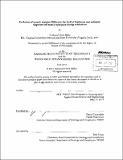| dc.contributor.advisor | Daniel Lizarralde. | en_US |
| dc.contributor.author | Miller, Nathaniel Clark | en_US |
| dc.contributor.other | Woods Hole Oceanographic Institution. | en_US |
| dc.coverage.spatial | n-us-ca | en_US |
| dc.date.accessioned | 2013-11-18T19:07:55Z | |
| dc.date.available | 2013-11-18T19:07:55Z | |
| dc.date.copyright | 2013 | en_US |
| dc.date.issued | 2013 | en_US |
| dc.identifier.uri | http://hdl.handle.net/1721.1/82316 | |
| dc.description | Thesis (Ph. D.)--Joint Program in Oceanography/Applied Ocean Science and Engineering (Massachusetts Institute of Technology, Dept. of Earth, Atmospheric, and Planetary Sciences; and the Woods Hole Oceanographic Institution), 2013. | en_US |
| dc.description | Cataloged from PDF version of thesis. | en_US |
| dc.description | Includes bibliographical references. | en_US |
| dc.description.abstract | This thesis investigates three processes that control the evolution of oceanic margins. Chapter 2 presents seismic images of a ~2-km-thick evaporite body in Guaymas Basin, central Gulf of California. In rifts, evaporites form under conditions unique to the latest stages of continental rupture, and the presence, age, thickness, and shape place new constraints on the history of early rifting there. Chapter 3 presents numerical experiments that show that diapirs can form in sediments on the down-going plate in subduction zones and rise into the mantle wedge, delivering the sedimentary component widely observed in arc magmas. Chapter 4 presents measurements of seismic anisotropy from wide-angle, active-source data from the Middle America Trench that address the hypothesis that the upper mantle is hydrated by seawater flowing along outer-rise normal faults. These measurements indicate that the upper mantle is ~1.57 to 6.89% anisotropic, and this anisotropy can be attributed to bending-related faulting and an inherited mantle fabric. Accounting for anisotropy reduces previous estimates for the amount of water stored in the upper mantle of the down-going plate from ~2.5 to 1.5 wt%, a significant change in subduction zone water budgets. | en_US |
| dc.description.statementofresponsibility | by Nathaniel Clark Miller. | en_US |
| dc.format.extent | 112 p. | en_US |
| dc.language.iso | eng | en_US |
| dc.publisher | Massachusetts Institute of Technology | en_US |
| dc.rights | M.I.T. theses are protected by
copyright. They may be viewed from this source for any purpose, but
reproduction or distribution in any format is prohibited without written
permission. See provided URL for inquiries about permission. | en_US |
| dc.rights.uri | http://dspace.mit.edu/handle/1721.1/7582 | en_US |
| dc.subject | Joint Program in Oceanography/Applied Ocean Science and Engineering. | en_US |
| dc.subject | Earth, Atmospheric, and Planetary Sciences. | en_US |
| dc.subject | Woods Hole Oceanographic Institution. | en_US |
| dc.subject.lcsh | Rifts (Geology) | en_US |
| dc.subject.lcsh | Continental margins | en_US |
| dc.title | Evolution of oceanic margins : rifting in the Gulf of California and sediment diapirism and mantle hydration during subduction | en_US |
| dc.type | Thesis | en_US |
| dc.description.degree | Ph.D. | en_US |
| dc.contributor.department | Joint Program in Oceanography/Applied Ocean Science and Engineering | en_US |
| dc.contributor.department | Woods Hole Oceanographic Institution | en_US |
| dc.contributor.department | Massachusetts Institute of Technology. Department of Earth, Atmospheric, and Planetary Sciences | |
| dc.identifier.oclc | 861615510 | en_US |
